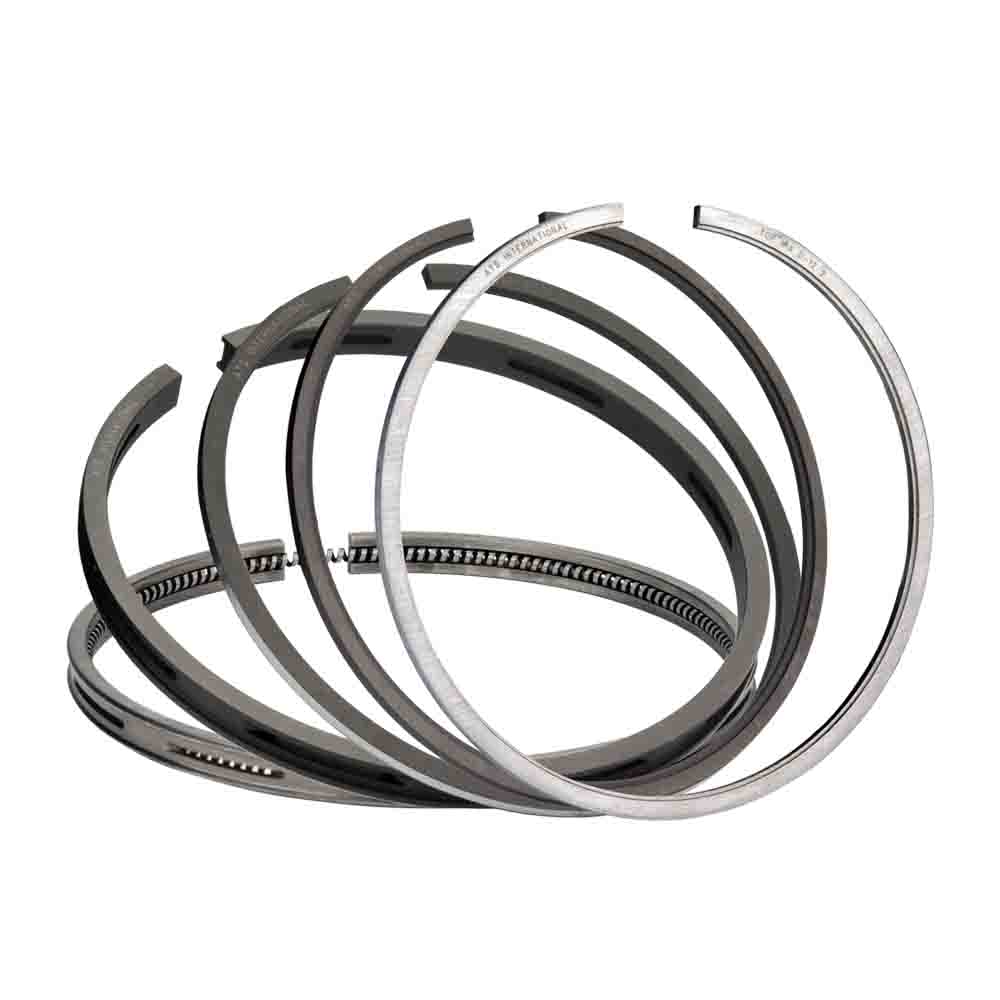
Engine Ring (Piston Ring)
Engine rings (piston rings) are vital components in internal combustion engines that are responsible for sealing the combustion space, limiting oil flow into the combustion chamber, and helping to dissipate heat from the piston to the cylinder wall. The selection of suitable materials, precise design, and quality production significantly influence the performance of engine rings. This article provides a comprehensive review of different types of rings, the design process, materials used in production, wear mechanisms, and modern piston sealing lifetimes, and factors affecting the performance of engine rings in tractor engines.
Role and Efficiency of Engine Ring:
Engine rings perform three main roles: sealing, oil control, and helping to transfer heat from the piston to the cylinder wall. Sealing the combustion area from other parts of the engine ensures that the pressure and heat produced during combustion are effectively used and prevents the entry of combustion gases and oil into other parts of the engine. Oil control means spreading oil on the cylinder wall and preventing its excessive and unnecessary consumption on the cylinder walls, which helps to maintain it for smooth piston passage and prevent excessive wear.
Types of Rings:
Rings are divided into three categories based on their location on the piston and the work they do, but their number changes depending on the type of engine and its conditions.
Compression Rings: These rings are located at the top of the piston and help to compress the fuel and air mixture in the cylinder. Oil Rings: These rings help prevent oil from entering the fuel and air under the piston and are placed on the compression rings. Wiper Rings: These rings help prevent direct contact of the piston with the cylinder wall and are placed above the compression rings. Preventing Damage:
Analyzing the wear and damage mechanisms of engine rings helps to better understand how to increase their efficiency and lifespan. Factors such as high temperature, periodic pressures, the presence of impurities and solids in fuel and oil, and physical collision resulting from piston movement can lead to ring damage. Types of damage can include ring edge wear, crack and gap formation, and other surface damages that lead to reduced sealing efficiency and increased oil and fuel consumption.
Reviewing the Performance of Engine Rings in Tractor Engines:
Reviewing the performance of engine rings in tractor engines involves several factors that focus on design, material selection, installation, and maintenance. Tractor engines are specifically designed for heavy towing and continuous work in harsh environments, so piston rings in these engines play a vital role in maintaining engine efficiency and performance.
Factors Affecting the Performance of Engine Rings in Tractor Engines:
Heavy towing and loading: Tractor engines are usually under heavy towing and heavy loads, which puts a lot of pressure on the piston rings, so resistance to wear is very important. Temperature and Operational Conditions: Tractor working conditions include high temperatures and significant temperature changes. These changes greatly affect the materials and design of piston rings. Dusty Environments: Tractors are usually used in dusty environments, which can cause mechanical wear of the ring and cylinder surface, especially if the air filter is not replaced in time. Fuel and Oil: The quality of fuel and oil also affects the health and performance of the engine ring. Using quality oils can prevent premature wear.
Maintenance and Repairs:
To maintain the desired performance of engine rings in tractor engines, periodic maintenance and timely replacement of consumable parts are of high importance. Periodic checks include checking cylinder pressure and measuring oil consumption, the presence of a disturbance in which can be early signs of ring wear or leakage.
Innovations and Improvements:
There are several methods to increase the efficiency and reduce the wear of engine rings, which include advanced materials manufacturing technologies, optimal design, and the use of special coatings. Optimizing ring design, such as changes in cross-sectional shape and dimensions, can help reduce applied forces and wear. Nanocomposite coatings and wear-resistant coating techniques such as DLC (Diamond-Like Carbon) can be used to increase ring resistance to scratching and reduce friction. Also, new alloys
atlassian group ©